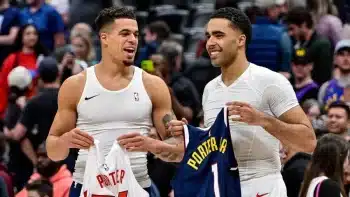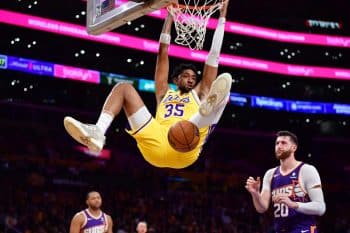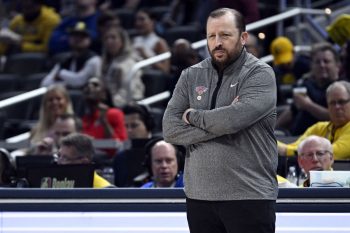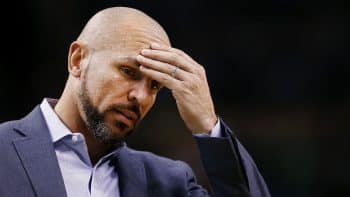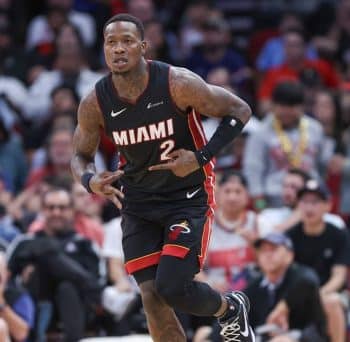NBA
What’s Changed North of the Border?
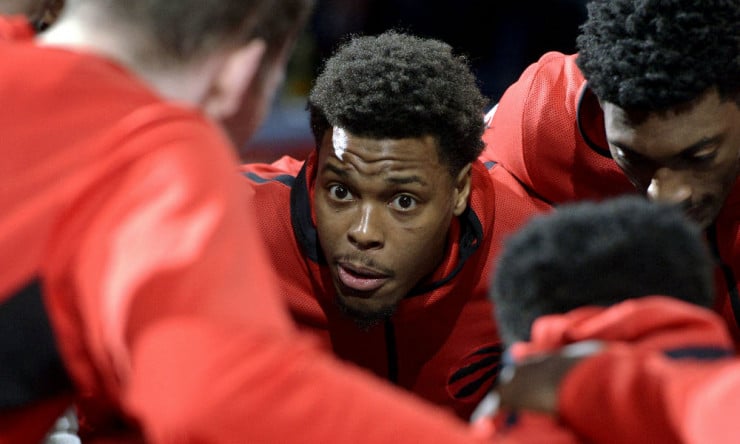
Following the Toronto Raptors’ sole blemish on an otherwise perfect month of February, an overtime loss to Milwaukee in their first game after the All-Star break, you could forgive guys in the locker room for lamenting a missed opportunity. A late comeback wasn’t enough to overcome a sluggish opening and middle period to the game; lines like “vacation is over” could be heard.
At the same time, there was a sense that interrupting an almost comically easy stretch might not have been the worst result in the end.
“Nobody wants to lose, we damn sure don’t want to lose,” DeMar DeRozan said following the game. “But a night like today is a great learning lesson for us. There’s a lot of things we can take from this.”
The Raptors are in a unique position where both sides of this coin can be true simultaneously. What was already a well-oiled machine for two consecutive 50-win seasons has added even more polish – in a lot of ways, this year has been something of a cakewalk.
Toronto outscores opponents at over double the per-possession rate of any other team in their conference; they’ve led by over 20 points for more time than the defending champion Warriors this season, second in the league behind only the Rockets. Without an early-season hot streak from Boston that likely inflated the Celtics’ record a bit beyond their actual team quality, the Raptors would be cruising to the East’s first overall seed.
Their bench, long a source of frustration (especially with Kyle Lowry off the floor), has become one of the best in the league. DeRozan has expanded his game in a couple important ways. Casey has leaned on depth more than in the past, both from a usage and minutes standpoint. There’s a pretty easy case to be made that this is the most complete Raptors team in franchise history. And naturally, it’s easy to jump to conclusions from afar.
“Believe me, I go the other way as far as believing the hype,” coach Dwane Casey said. “I know what’s coming around the corner.
“You know you can’t believe the hype. You have some people wishing and hoping it goes that way. They probably have that story already written and ready to put it in. But you can’t believe the hype.”
As Casey said, he’s setting the opposite tone entirely for his group. Zoom out even further than we have so far here, and Toronto is really in the same situation as the last couple years – just with different window dressings. The East’s presumed final boss is still alive and well in Cleveland. Things have changed for the Raptors, but none of it will matter if it ends in another loss to the Cavs in May.
About that bench: It’s been incredible, and Casey deserves a huge amount of credit. The Raptors struggled to break even when Lowry rode the pine in previous seasons, and got destroyed in those minutes in the playoffs. They outscore teams by near-Warriors levels when he sits this year.
That’s a great sign, right? Well, yes…and no. Maybe. It’s another two-sided issue, it turns out.
The positives first, and there are a couple.
For one, this hasn’t just been an increase in minutes. It’s been an increase in responsibility for several guys, and one that could matter come playoff time. Toronto has run into problems in previous postseasons when smart opponents loaded up their defensive game plans against Lowry and DeRozan. With an offense built so heavily around those two and their prodigious creation abilities, the supporting cast often simply seemed at a loss for what to do when some of that burden shifted onto them.
Casey’s reliance on his bench this year might help mitigate that this time around. Lowry and DeRozan are carrying by far their smallest load in years, the former in particular. Meanwhile, guys like Fred VanVleet and Delon Wright are possessing the ball for over twice as long every night as last year, per player tracking data from Second Spectrum.
The Raptors were dead last in percentage of baskets assisted last year, at just 47 percent – they’re up about 10 percentage points this year, clearly more capable of playing a more diplomatic version of offense than past Toronto teams.
Whether this was Casey’s original goal or not, the hope is that reps in this kind of role pay off when the games matter most.
“It’s great when we can do some misdirection type of things, just mix it up,” DeRozan said. “A lot of teams understand and know our plays when it comes to me and Kyle.”
The bench has been so successful that there’s a real case for continuing to play them as a unit in the playoffs, something that’s pretty rare in the league today. Color this writer skeptical, but the fact that it’s even a reasonable conversation is a pretty huge leap from where this group was last year.
There’s a flip side here, though. These great depth minutes haven’t exactly come at playoff intensity, or often anywhere close. The Raptors have spent more time up by double figures in the fourth quarter than they have with the score within five points; they’ve played just 104 “clutch” minutes on the year, with the score within five and under five minutes remaining in a game (only five teams have played under 100 such minutes).
They’ve been bad in those stretches, too – they have the league’s fifth-worst per-possession rating. Calling clutch time a direct approximation of playoff intensity is obviously foolish, but it’s at least a moderately useful proxy. Does the fact that Toronto has struggled so badly in the periods when defenses are keyed in on Lowry and DeRozan foreshadow badly for this group? Or do we trust the larger overall depth sample we’ve seen?
Maybe the toughest area to parse, though? Rest, which is always a popular topic for top teams headed down the stretch.
For one, the bench’s success has had the additional effect of providing plenty of down time for the primary guys. Lowry and DeRozan are playing over six fewer combined minutes per night on the year, with the brunt of that difference allowing Lowry to get to a much more manageable number. It’s to the point where Casey is actually being asked about getting his stars more time on the floor the rest of the year to help keep them in rhythm.
“I’m sure it’s coming, whether it’s on purpose or not,” Casey said. “That’s been talked about.”
We’re entering nebulous territory here – there’s only so much reasonable speculation to be had about player loads and fatigue. But once again, there are two sides to the conversation: Keeping guys in rhythm is one thing, but toeing a very imprecise line between that and tiring them out down the stretch is tough, to say the least.
Casey has given guys like Lowry and DeRozan games off near the end of the year in the past couple seasons, but it sounds like he’s reticent to go that route this time around.
“As far as resting players and giving guys days off and things like that, we’ve got to really examine that,” Casey said. “That hasn’t really helped us a lot [in the past].
“I don’t know if it takes our rhythm away or what it does to us, but I think it’s kind of discombobulated us a bit in the past. I like the rhythm we have now, but there is some thought as far as making sure guys can play bigger minutes [in the playoffs]. We’ll see.”
So will it be enough? Can Toronto’s faithful dare to dream?
In the end, despite all the changes around the margins, the answer could just as easily end up coming back to the lead actors. DeRozan has dedicated himself to improving lacking areas of his game after two straight subpar postseasons; he’s hit another level as a playmaker, and while he’s still not terrifying anyone as a three-point shooter, he’s become respectable enough to keep teams somewhat honest.
Can he keep it up against the kind of playoff attention he’s wilted under in the past? Will Lowry’s big reduction in minutes and load this year allow him to have more success? Can an improved bench and a perhaps-weakened Cleveland squad – plus potential home advantage and the ability to avoid both the Cavs and Celtics until the conference finals – narrow the gap even further?
It’s hard to answer these questions right now, but the fact that they’re reasonable questions at all is meaningful on its own. Let’s see if things are different this year north of the border come April.
